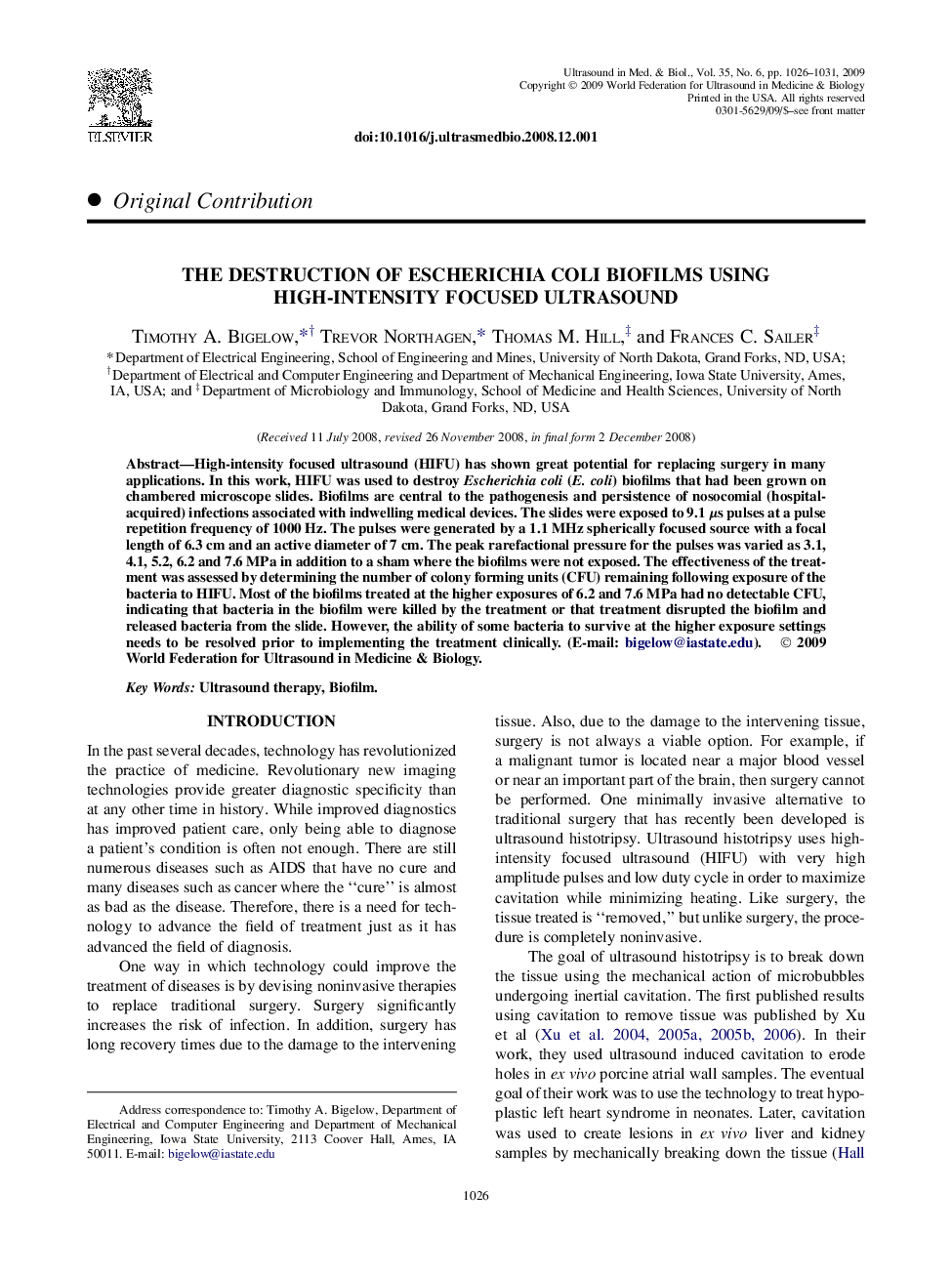| Article ID | Journal | Published Year | Pages | File Type |
|---|---|---|---|---|
| 1762442 | Ultrasound in Medicine & Biology | 2009 | 6 Pages |
Abstract
High-intensity focused ultrasound (HIFU) has shown great potential for replacing surgery in many applications. In this work, HIFU was used to destroy Escherichia coli (E. coli) biofilms that had been grown on chambered microscope slides. Biofilms are central to the pathogenesis and persistence of nosocomial (hospital-acquired) infections associated with indwelling medical devices. The slides were exposed to 9.1 μs pulses at a pulse repetition frequency of 1000 Hz. The pulses were generated by a 1.1 MHz spherically focused source with a focal length of 6.3 cm and an active diameter of 7 cm. The peak rarefactional pressure for the pulses was varied as 3.1, 4.1, 5.2, 6.2 and 7.6 MPa in addition to a sham where the biofilms were not exposed. The effectiveness of the treatment was assessed by determining the number of colony forming units (CFU) remaining following exposure of the bacteria to HIFU. Most of the biofilms treated at the higher exposures of 6.2 and 7.6 MPa had no detectable CFU, indicating that bacteria in the biofilm were killed by the treatment or that treatment disrupted the biofilm and released bacteria from the slide. However, the ability of some bacteria to survive at the higher exposure settings needs to be resolved prior to implementing the treatment clinically. (E-mail: [email protected]).
Keywords
Related Topics
Physical Sciences and Engineering
Physics and Astronomy
Acoustics and Ultrasonics
Authors
Timothy A. Bigelow, Trevor Northagen, Thomas M. Hill, Frances C. Sailer,
